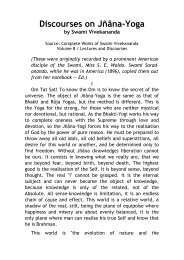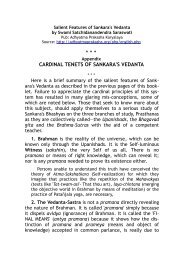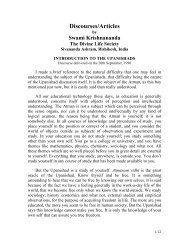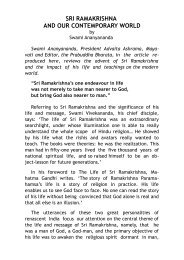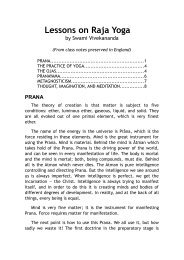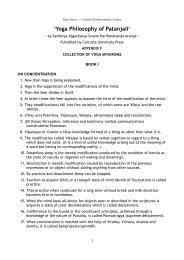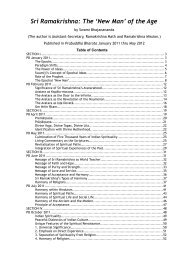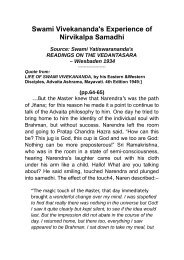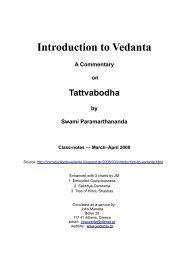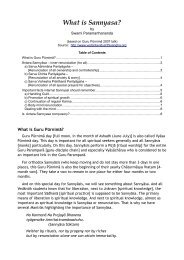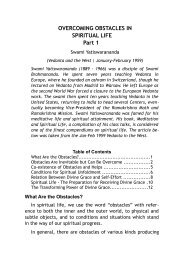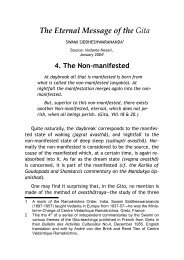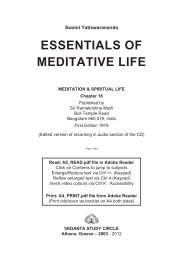Concentration & Meditation - Vedanta
Concentration & Meditation - Vedanta
Concentration & Meditation - Vedanta
Create successful ePaper yourself
Turn your PDF publications into a flip-book with our unique Google optimized e-Paper software.
34 Swami Bhajananandaery person one of these states of mind predominates, and thisdetermines his behaviour. Spiritual aspirants may find their mindsgoing through the first four states repeatedly. This is a big problemespecially during the early years of spiritual life, and thosewho want to lead a meditative life should have a clear understandingof the five states.Ksiptam or the restless state of mind is one in which the mindis totally under the sway of the senses. It flits aimlessly like a butterfly.This is the predominant state of mind in children and thosewho lead a purely sense-bound life. It is a state in which rajaspredominates. Restlessness of the mind can be controlledthrough disciplined work, deep studies, yoga exercises, etc.In the state called mudham, the mind remains dull and inactiveowing to a preponderance of tamas. It may be caused byphysical factors like fatigue or disease. But more often it iscaused by conflict of emotions. When the conflict between twoopposing desires becomes too strong, the mind enters an impasse.The problem becomes worse when, owing to repression,the person is unable to detect the cause of the conflict. Theblues, depression, spiritual dryness, etc. also come under thiscategory, and their origin can usually be traced to the building upof tension in the unconscious.The third state is viksiptam in which the mind remains activebut not restless as in the first state. It becomes preoccupied withdifferent ideas. This is the predominant state of mind in scientists,artists, philosophers, scholars, social workers and other culturedpeople. This condition is brought about by the prevalence of bothrajas and sattva in more or less equal measure. This is a state inwhich concentration can be practised, for concentration is impossiblein the first two states. However, this concentration is only asort of preoccupation with ideas or activities and is somethingquite different from true meditation, as has been pointed out elsewhere.19 Spiritual aspirants should learn to keep the mind at leastin this state through work, studies and deep thinking.We now come to the fourth state of mind known as ekagramin which alone higher spiritual experience becomes possible. Inrespectively.19. See <strong>Concentration</strong> and <strong>Meditation</strong>, Part I



